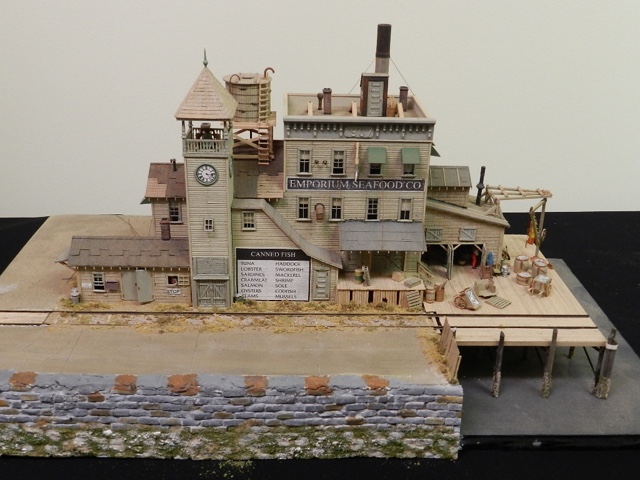Click here to read the November 2020 issue of The Flimsy Board from the Bremerton Northern Model Railroad club.
You are browsing archives for
Author: Anton Faulk
Seeking Lost Belongings
By Robert M. Martin
A good friend of mine, Jeffery D. Craig, passed away on May 8th of this year. Some of my belongings were being stored at his rental house. When I was informed of his passing some friends of the family had already packed up his stuff and moved it out. I was informed that a member, or members, of the Boeing club picked it up. But I am not sure. Does anyone in the 4D have any information about this? Please contact me at railroadbob55@gmail.com if you have any information that can help me find my belongings.
Here is the list of items:
- A homemade air-regular with a blue water trap on a yellow triangle stand. (I built this with a friend when I was in the navy).
- A white homemade paint booth, (I built when I was Jeff’s roommate).
- A red air compressor, (he borrowed for painting).
- A green footlocker (with some personal stuff inside).
- My old regular clock, (a gift to me in the 1970s).
- A model of a lighthouse with working light.
There is one last item that was to be passed down to the old guard, (the group). It was a passenger set: a Great Northern Empire train. Upon the wishes, of the last guards, we would like to see this train go to the Boeing club, that my friend Jeff has visited many times.
So I am asking for help from the 4th division membership to see if I could find my stuff. I know that one of the family members live in Puyallup, WA.
Thank you for your time.
Robert M. Martin
Life Member L5208 & L 4-221.
Mt Vernon Fall 2020 Non-Clinic Report
Click here to read the Mt. Vernon Non-Clinic Report for Fall 2020.
David Yadock’s Dry Gulch & Western Railroad – Part 8
Article & Photos By David Yadock
Dry Gulch & Western, A Photo Series Part 8
I’m sure there are some of you that are interested in operations and how it plays out on my layout. At first, I was only interested in “running trains” and layout photography. After an invitation to participate in the Oly-Ops operating sessions from Ed Liesse my view on operations changed. I admit my layout wasn’t specifically designed for operational running of trains, but I have made some significant changes to lend itself to be more operations friendly. The two main yards were migrated closer to the aisles and additional sidings were added to the track plan.
Yes, being an operator on my layout requires some skill but running a freight or yard can be an enjoyable experience even for the novice. The easy jobs are passenger trains and fast freights. These allow a first-time operator to learn the basic operation of the layout and to determine exactly where cities/yards are on the layout. They also learn the location of critical passing sidings. Another element on my layout is tonnage. Yes, trains can stall on some of my main line trackage. Operators really need to follow their train and be aware of the tight curves on steep grades. This can cause a standard freight to come to a dead stop and just sit and spin its drivers. Some trains may need to double a mountain grade while other freights need a pusher locomotive to help with the grade. This is all part of the fun!
For the basics, I use car cards and the “mother may I” approach for dispatching/yard control. There is no distinct schedule for trains to run but that may change in the future. There are a variety of jobs, some can be easy, some can be challenging, but all are a lot of fun. The jobs range from passenger trains, mixed freights, peddler freights, fast freights, transfer runs between yards, branch line local runs, and a couple yard jobs. There are enough jobs for 6-7 operators. Operating sessions run about 1-1.5 hours. Now onto more of the layout tour.
Photo 36 shows the view looking down my large canyon. To the extreme left is my curved wooden trestle that carries the mainline out of Dry Gulch. On the upper right is the arch bridge spanning the valley where the town of Hayes River is located. The scenery in the foreground is still incomplete but most of the scenery further into the canyon is finished. For you John Allen fans this photo may remind you of his layout. Again, I tried not to copy his layout but to produce similar scenes. Please excuse the car cards sitting on top of the freight cars!
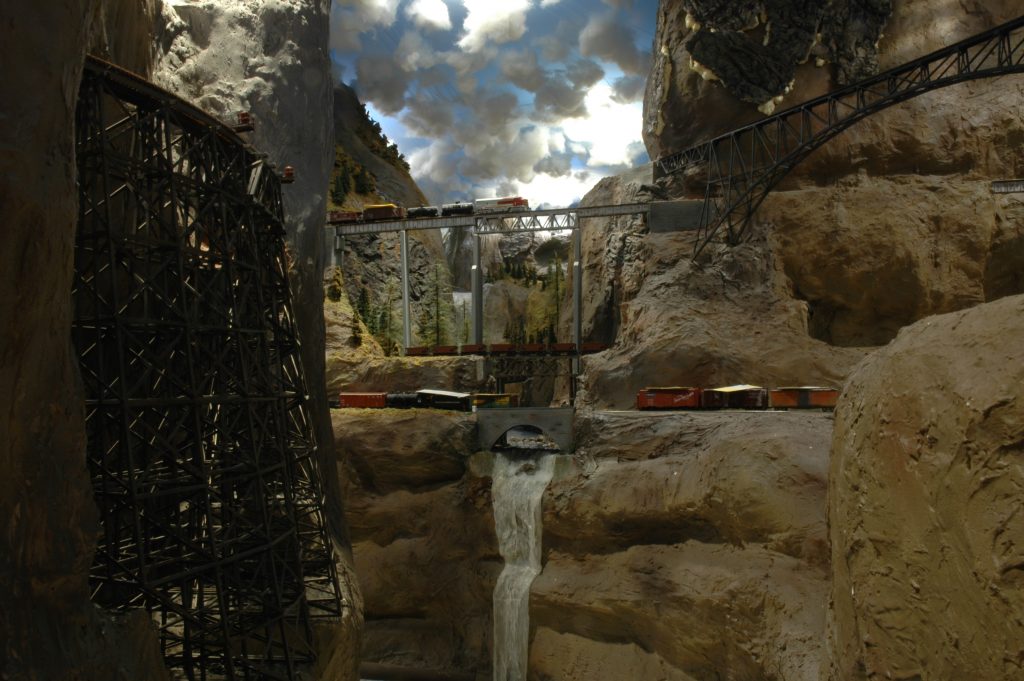
Photo 37 gives a low angle view looking at the town of Hayes River. A smaller yet to be named town resides higher up in the photo. During the Covid-19 stay at home situation I have done some plaster surgery in this area, so it has changed a bit from when these photos were taken. The track that has the ore cars on it is the narrow-gauge line leading to Electric City. The bridge in the lower right carries the mainline spiral around the mountain. You may note the white block with number 25 on it in front of the “Selecto” reefer, those marker buoys help identify the turnout on the control panel. These were a great suggestion made by Russ Segner. I did make them removeable for photos but since these photos were taken right after an operating session I chose to leave them in place.
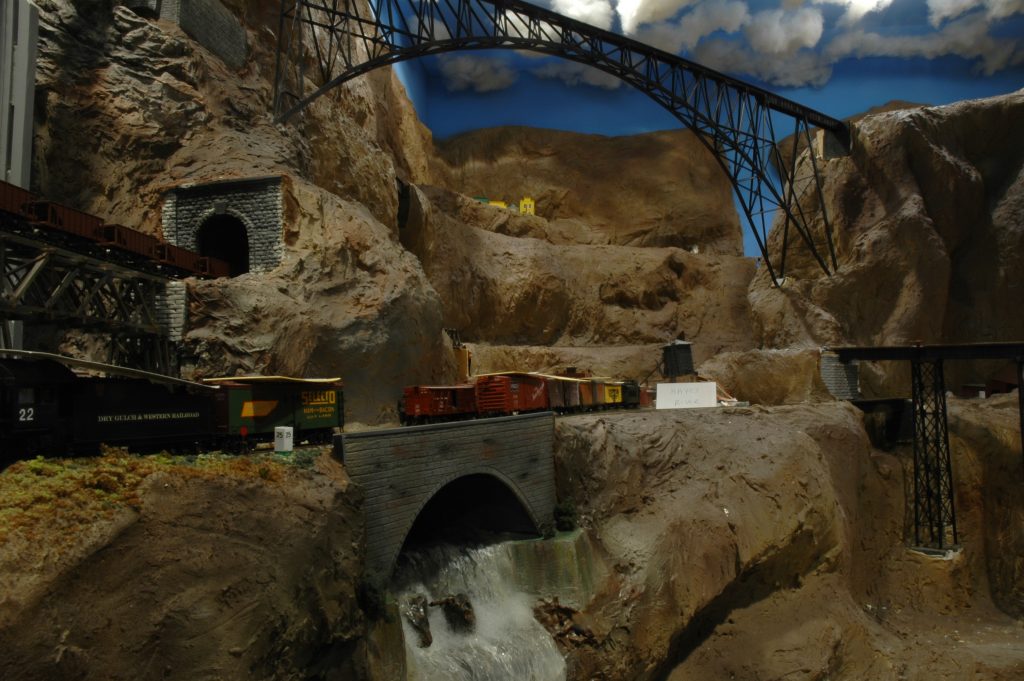
Photo 38 is a high view of the arch bridge. The town of Hayes River is below with its access hole. The “no name” town is in the corner of the room. Hmm, I have lots of scenery to complete!

Photo 39 is a view of all the bridges that traverse the Hayes River. Way in the back is a wooden thru-span, up front is the silver colored high bridge, beneath it is the wooden deck truss that the narrow-gauge line uses, and finally up front is a stone arch bridge. The tunnel to the left in the photo leads to Electric City far in the valley by the tall waterfall in the background.

Photo 40 is a helicopter view of the valley taken just in front of the high bridge. This photo gives a better view of the wooden thru-span bridge from photo 39. On the right you can see the gray painted water tower and part of the town called Tallyn Pass. Most of it his hidden in this photo. It has a nice witch’s hat roof station. The station was built from plans of the South Lyon station that is still located in Michigan. You can also see the snow-covered mountains in the background. Can you spot where the mirror is located? How about the location of the access hatch? If any of you have seen my clinic called “Art of Deception” then you will know where they are located. Directly behind the mountain to the left is the small town called Electric City. It has a small station and an electricity generating facility at the base of the waterfall. The mountains along the wall in this area have multi-color LED strip lights behind them. Those lights can be turned on to produce a realistic sunset lighting effect.

Next time we will move further down the mainline. Could there be even more bridges?
David
Chuck Ricketts Fantasy Island Railroad – Parts 6, 7 & 8
Click here to read the eighth article on Chuck Ricketts Fantasy Island Railroad.
Editor’s Note: Parts 6 & 7 from the series were lost in transit and had not been posted. That has been straightened out and the links are included here in case you missed them.
Click here to read part six.
Click here to read part seven.
Bremerton Northern October 2020 Flimsy
Click here to read the October 2020 issue of The Flimsy Board from the Bremerton Northern Model Railroad club.
The Confessions of a Hi-Railer
By Ed Ives
I’ve always had an interest in trains, cherished my trains as a child and at the age of 30-something time came to graduate to ‘Model Trains’, or so I thought. My interests lay with UK trains, the ones I grew up with and not those here. Sorry about that.
The options were to either scratch build with the use of machine tools like a lathe etc. which I do not have or kit build in O gauge or OO gauge. O gauge kits and bits were few and far between whereas OO parts were readily available and affordable, so OO kit build as a starter it was.
OO gauge is a bit of a compromise, 4 mm/ft for the structure running on HO track which is 3.5 mm/ft, so OO gauge trains are kind of narrow gauge. Perfection is needed, so I thought, true 4 mm/ft, hand built track and of course re-gauged stock. At that time in the UK there were three standards for true scale models; P4 and S4 competing standards using a track gauge of 18.83 mm and an older standard of EM gauge of 18 mm/ft. Hum, what to choose? Well 50 years ago both the P4 and S4 societies were in their formative years and maketed their own parts none of which matched what I wanted to build, LMS stock. I settled on EM gauge for the time being.
I chose to start with building some simple kits, passenger cars and choose the track standard later. I started with something really simple, or so I thought (are you getting the drift here?), a Graham Farrish kit of a LMS commuter passenger car, three of them. The kits could not have been simpler, a plastic molded body, four sides and a base as one piece, a metal channel as an frame to take the trucks and the framework between and lastly a metal curved roof, a shake the box and they are all assembled. I purchased separately sprung buffers to replace the molded ones, ventilators for the roof and lastly a book of drawings of LMS passenger cars.
A start was made on assembling the kits and using the reference drawing from the book as a guide.
- Oops, the trucks lack the foot boards that came in two different versions. No problem I can make foot boards out of thin plywood and attach to the trucks with epoxy cement. Job done.
- Oh dear the truss rod under frame was too short and made as a one piece white metal casting. Hum, do I throw them away and make new out of brass? I decided to save that for later.
- Oh, again the drawing shows all the other stuff that hangs below the floor; dynamo, battery pack, vacuum cylinders and so forth not included in the kit. I go off and make these parts as best I can.
- Door handles; grab handles and handrails were not included in the shell molding. I make these out of piano wire. The door handles were a real pain as there are so many of them about sixteen per car.
- Ah, the roof does not fit correctly with gaps at the ends of each car and resists being reformed. I get this bright idea to mold the replacement roofs out of styrene sheet. A plaster mold was made and the first production drape formed roof made. Disaster! The styrene sheet shrinks when gently heated in the oven as well as curls up something like an oversize fortune cookie. My wife is concerned that I’ll ruin the kitchen oven and calls a stop to this effort. Go back to basics and fashion roofs from thin sheet metal which become quite effective. It shows that I developed skills repairing the bodywork on my first car while at college. Rain strips made out of piano wire again, is used and soldered to the roof. Holes drilled and the ventilators added. Now we’re getting somewhere I feel.
- Oh, I wish for high frequency passenger car lighting. I build a high frequency power generator out of an old TV set and experiment with Plexiglas strips, grain of wheat bulbs and diodes to find a workable solution that fit nicely within the car. Someone suggested that I needed a license for the generator, license, what license, hum?
- The molded buffers are cut off the car bodies and the replacement sprung buffers are added. I re-gauge the wheels for EM and mount in the trucks as a test. All complete less painting and interior, I put the assembled cars on a piece of track and they look great. The nagging issue is they each weigh a ton, feel like they are made out of solid material, way too heavy for the appropriate locomotive to pull. And it only took me THREE years to do and I still have that bum under frame to deal with.
Conclusion – Life is too short to build me a scale Model Railway.
Ed Ives
The Confessions of a Hi-Railer
David Yadock’s Dry Gulch & Western Railroad – Part 7
Article & Photos By David Yadock
Dry Gulch & Western, A Photo Series Part 7
I’m sure many of you have been wondering about my freight car fleet. In the early years I had just about every siding and all the yards full of cars, but I learned! Now I keep around 100 or so cars on the layout. Since I have become involved with operations I try keep the yards about 1/3 full of cars. This helps or sometimes hinders car sorting for yard operators. I do have around 250-300 cars in total with most being stored on specially constructed shelves. All my cars have had metal Walthers Proto wheelsets installed on them along with standard Kadee #5 couplers. I did test Kadee “scale” couplers on some of my cars but found they did not couple well with the standard #5 couplers in certain situations, they have since been removed from those cars. My fleet of cars come from many various manufacturers and most are older non-superdetailed cars. I still can’t believe that some of my early cars that I have on the layout were purchased for 50 cents each! On my layout you can find a mix of AHM, Roco, Atlas, Athearn, MDC, Tichy, Varney, Ertl, Life-Like Proto, Ulrich, Tangent, and Accurail models all working on the layout. I still have the three original AHM freight cars from my very first train set, yes are on the layout! Regarding freight cars, I have found the key is to have them all run and perform well. If they do not, then they get pulled from the layout, tagged to identify the problem, and replaced with another car. There are plenty of replacement cars waiting in the wings to go onto the layout. Also, if you have been noticing, there are a lot of east coast railroads represented in my freight car fleet. Originally, I was thinking of creating a layout that would be based on the prototype Pennsylvania RR. That didn’t happen. I still kept the cars for the Dry Gulch & Western and used whatever road name that I liked. I admit, if the car has eye-catching graphics that is a plus. Another issue, the cars do not fit any specific era. Yes, I have billboard reefers that ride on arch bar trucks. I even have some ancient wooden passenger cars. I do try to have freight cars that are generally from the steam era. One thing I still do not have are some home road freight cars. I have a few but there are still a lot of freight cars in boxes that need to be built and lettered specifically for my railroad. Like with all model railroads there is always something that needs to be done.
Photo 31 shows a closer view of the tunnels and the right abutment of my version of the Canyon Diablo Bridge. This view shows how I attach some rock plaster castings. I use expanding spray foam. The surrounding areas behind the casing will be filled with joint compound. The joint compound will be carved and then painted. Ground cover will be added later.

Photo 32 shows a full view of the bridge. In the bottom corner of the photo you will see a silver SP gondola, one of my original “trainset” cars! Note how the mirror in the corner allows the room to expand. The mountain to the left is completely hollow along the backside. That gives me plenty of access to the track in that area.
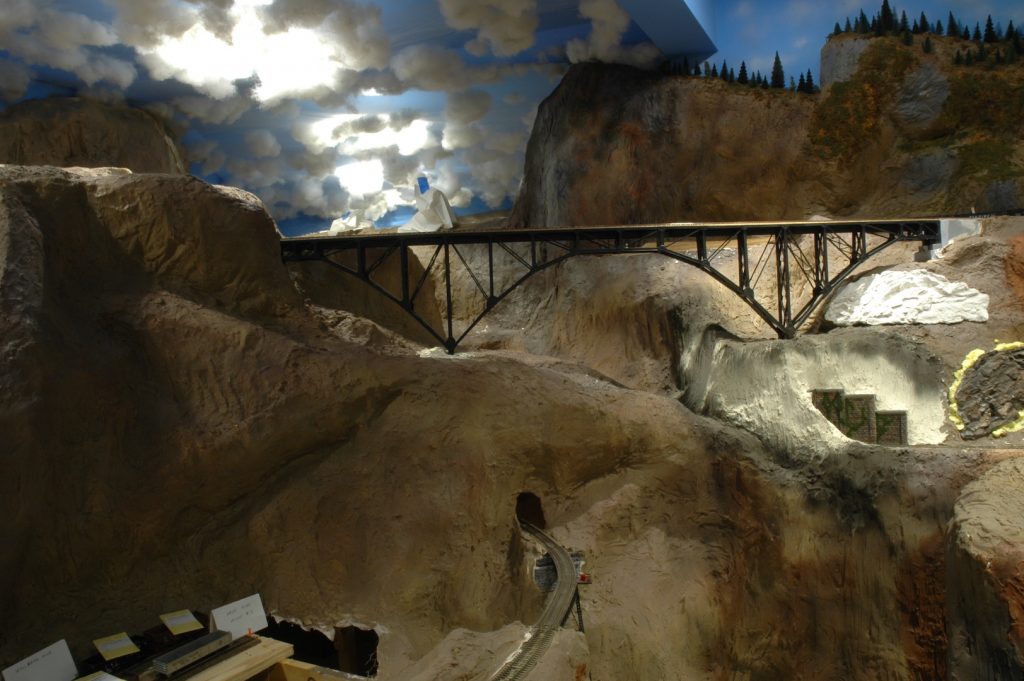
Photo 33 shows a closer view of the bridge. The bottom steel work does not support the bridge. There is a one-inch aluminum channel that runs the length of the bridge, it carries all of the weight. The channel is supported in both ends by solid wood abutments attached to the benchwork.
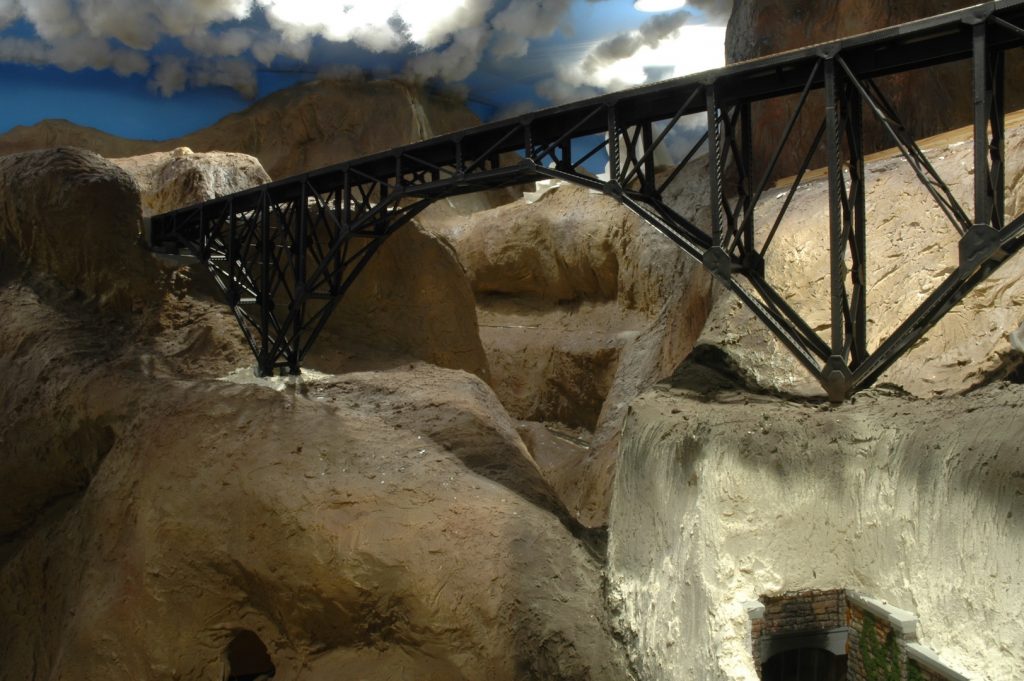
Photo 34 shows the central mountain. The mainline curves around to a second large bridge. Just like John Allen’s Gorre & Daphetid layout I have a spiral at the base of this mountain.
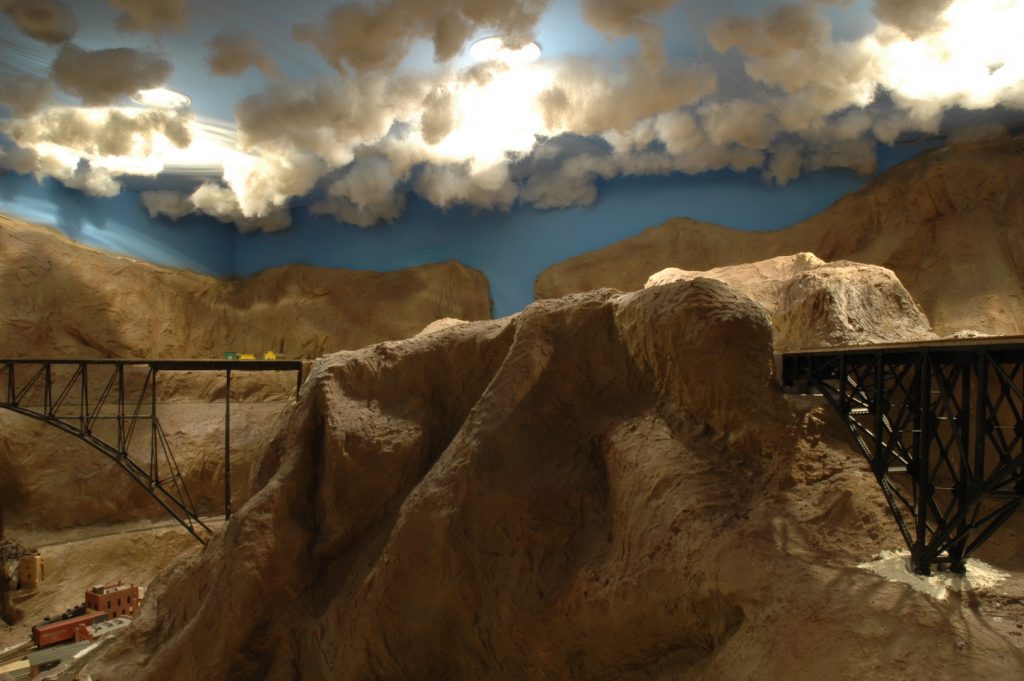
Photo 35 shows the second arch bridge. This is a close replica of the Vance Creek bridge located just out of Shelton WA. It is made from styrene with brass inserts for structural support. This bridge was constructed on a saddle shaped jig. Construction of this bridge was several months long. My model bridge towers over the town of Hayes River. To the extreme left you can see some of the snow-covered mountains and even more bridges. My freight trains are constantly gliding over bridges, blasting through tunnels or snow sheds, and battling tough grades with tight curves to move freight over the mainline through the mountains. Next time we will check out more of the bridges on the layout and give you a peek at the valley that is on the left.
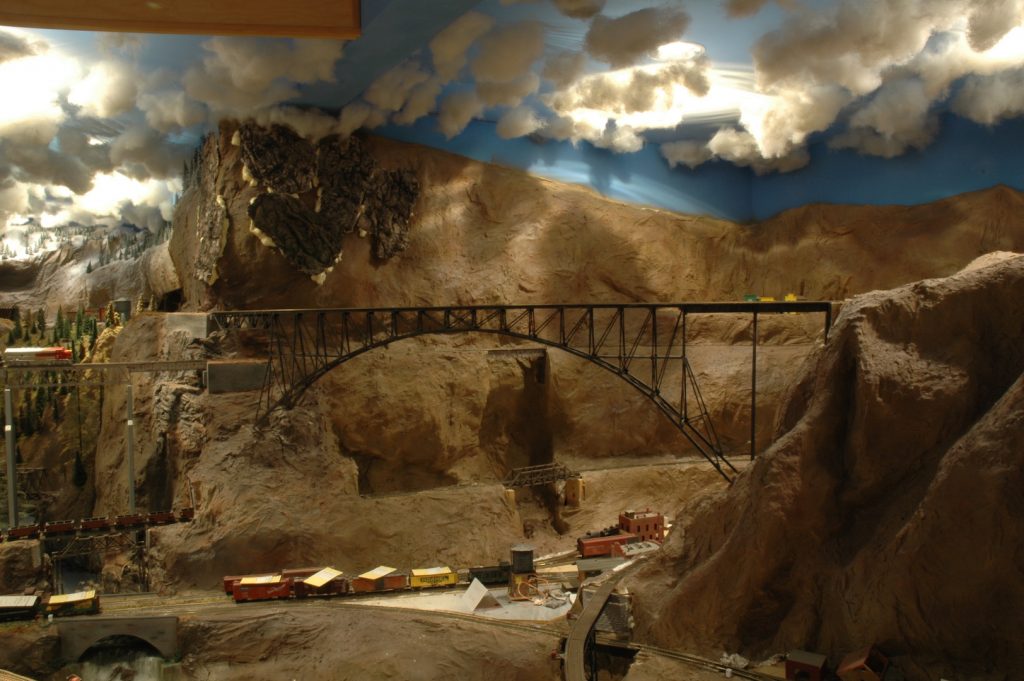
That is it for this week.
David
September 2020 Eastside Virtual Get Together Clinic
By Alex Brikoff
I’m happy to announce our next Eastside Clinic will be held virtually on ZOOM on Thursday, 09/17, starting at 7:00 PM with our virtual lobby opening at 6:45 PM. We have switched back to Thursdays by popular demand! Since our clinics are virtual these days, I would like to extend an invitation to all the 4th Division to attend next Thursday. So be sure and save the date for the September Eastside Clinic next Thursday, 09/17 at 6:45 PM! The log in info for the clinic is below.
Topic: September Eastside Virtual Get Together Clinic
Time: Sep 17, 2020 06:45 PM Pacific Time (US and Canada)
Join Zoom Meeting
https://zoom.us/j/96569499645?pwd=TDc0Nk5ubVArUTEvYVZEQXo4cFBqQT09
Meeting ID: 965 6949 9645
Passcode: 613377
Our Clinic this month is titled “The Everett & Monte Cristo Ry in Trainz” and will be presented by Didrik Voss. Didrik is a very talented local modeler and a NMRA MMR. He has prototype modeled the Everett & Monte Cristo Ry, circa 1900, in his basement. However, he was only able to model 2 miles of the 68-mile route. As a result, he began modeling the remaining 66 miles on the computer using Trainz. This clinic will be a walkthrough on what has been accomplished so far. Please realize, this is 68 real miles, plus all of Everett with the GN and NP lines overlapping. If the interest is there, he would be happy to get into more detail on how to create the Everett & Monte Cristo Ry in Trainz.
After the Clinic, we will have some time for other folks to show off their latest model work in our “Show and Brag” segment. The Clinic will wrap up with some administrative comments.
Alex
Fine Scale Miniatures For Sale
By Richard Hoffmeister
FOR SALE: A number of assembled and detailed HO dioramas and buildings from Fine Scale Minatures kits. Located in Pierce County, Washington – cannot be shipped. For prices please contact richardhoffmeister@comcast.net
